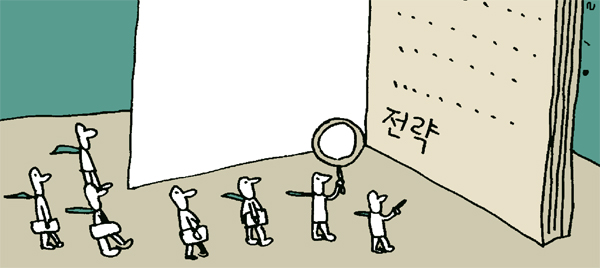Two-way tactics vs. clumsy response

Earlier this year, North Korea made a conciliatory gesture to restore the inter-Korean relationship. Pyongyang’s move seemed sincere and supposedly came from leader Kim Jong-un, the chairman of the North’s National Defense Commission. In February, reunions resumed for families separated during the 1950-53 Korean War, while annual joint military exercises were being held between Korea and the United States. It was an unusual move since the joint drills used to make Pyongyang uneasy, even when the inter-Korean relationship was good.
Meanwhile, North Korea held a large-scale live-fire drill near the Northern Limit Line (NLL) in the West Sea and a shooting competition with its commanders and pilots. It did not stop its military provocations, and the frequent NLL violations elevated tensions. On May 22, North Korea fired artillery shells at an ROK naval vessel over the NLL.
However, a day later, Pyongyang announced that it would participate in the Asian Games in September in Incheon.
Pyongyang uses a classic two-way tactic of soft and hard moves. It is also using the threat of a fourth nuclear test to its advantage, which draws attention from the international community. North Korea’s foreign ministry spokesman said on April 29 that “there is no time limit for a new nuclear test.”
Then on May 22, he said, “No military measure, such as a nuclear test, is scheduled.” Pyongyang may seem to be changing plans whimsically, but they all could have been meticulously calculated.
How about the South Korean government? While Seoul always claims that North Korea’s offer to talk is not sincere, it didn’t firmly respond to provocations either. Its stance continues to be ambiguous, somewhere between talk and confrontation.
Defense Minister Kim Gwan-jin pledges to “completely crush the origin of attack, its support and commanding sites in case of North Korea’s provocation” whenever he has a chance. But a crude unmanned aerial vehicle flew over the Blue House, and the prediction of an imminent fourth nuclear test turned out to be incorrect. Seoul also didn’t strike back when North Korean artillery shells fell over the NLL just because they did not hit land.
Moreover, North Korea attacked a Korean vessel on May 22, when the head of the National Security Office and the National Intelligence Service chief were dismissed and the security control tower was not operating.
The Artillery Hunting Radar (Arthur), the Aegis Combat System, which can detect and track up to 1,000 kilometers (621 miles), and the early alert system, which is supposed to capture all flying objects, all proved useless. Seoul also failed to secure evidence to prove North Korea’s responsibility, much less the origin of the attack. So North Korea denies having fired the artillery and argues that Seoul’s warning of an imminent nuclear test was a tactic for the upcoming election.
National security cannot be secured with words. A failed economic policy could provide a second chance for its revival, but lost security cannot be restored. The new foreign policy and security lineup need to make a thorough and comprehensive strategy for North Korea by reviewing just how disastrous a clumsy response can be.
*The author is a political and international news reporter for the JoongAng Ilbo.
JoongAng Ilbo, May 26, Page 29
By JEONG YONG-SOO










with the Korea JoongAng Daily
To write comments, please log in to one of the accounts.
Standards Board Policy (0/250자)